Related Research Articles

Emil Erich Kästner was a German writer, poet, screenwriter and satirist, known primarily for his humorous, socially astute poems and for children's books including Emil and the Detectives. He received the international Hans Christian Andersen Medal in 1960 for his autobiography Als ich ein kleiner Junge war. He was nominated for the Nobel Prize in Literature in six separate years.
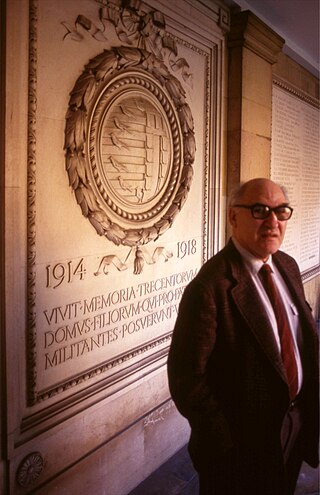
Gerhard "George" Lachmann Mosse was a German-American social and cultural historian, who emigrated from Nazi Germany to Great Britain and then to the United States. He was professor of history at the University of Iowa, the University of Wisconsin–Madison, and also in Israel, at the Hebrew University of Jerusalem. Best known for his studies of Nazism, he authored more than 25 books on topics as diverse as constitutional history, Protestant theology, and the history of masculinity. In 1966, he and Walter Laqueur founded The Journal of Contemporary History, which they co-edited.

Erich Mendelsohn ; 21 March 1887 – 15 September 1953) was a German-British architect, known for his expressionist architecture in the 1920s, as well as for developing a dynamic functionalism in his projects for department stores and cinemas. Mendelsohn was a pioneer of the Art Deco and Streamline Moderne architecture, notably with his 1921 Mossehaus design.

The Ullstein Verlag was founded by Leopold Ullstein in 1877 at Berlin and is one of the largest publishing companies of Germany. It published newspapers like B.Z. and Berliner Morgenpost and books through its subsidiaries Ullstein Buchverlage and Propyläen.

The Berliner Tageblatt or BT was a German language newspaper published in Berlin from 1872 to 1939. Along with the Frankfurter Zeitung, it became one of the most important liberal German newspapers of its time.

The German language satirical magazine Ulk was printed from 1872 until 1933 by the publisher Rudolf Mosse. Its headquarters was in Berlin, Germany.

Rudolf Mosse was a German publisher and philanthropist.

Expressionist architecture was an architectural movement in Europe during the first decades of the 20th century in parallel with the expressionist visual and performing arts that especially developed and dominated in Germany. Brick Expressionism is a special variant of this movement in western and northern Germany, as well as in the Netherlands.

Mossehaus is an office building on 18–25 Schützenstraße in Berlin, renovated and with a corner designed by Erich Mendelsohn between 1921 and 1923.
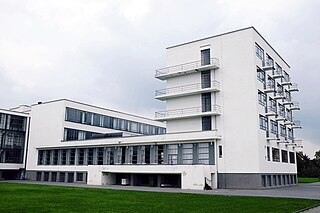
The New Objectivity is a name often given to the Modern architecture that emerged in Europe, primarily German-speaking Europe, in the 1920s and 30s. It is also frequently called Neues Bauen. The New Objectivity remodeled many German cities in this period.
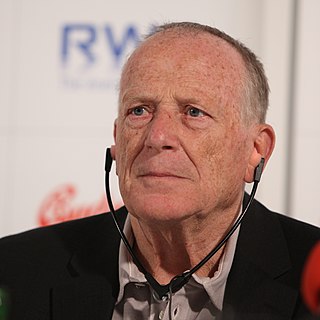
Wolfgang Kohlhaase was a German screenwriter, film director, and writer. He was considered "one of the most important screenwriters in German film history", and was one of the GDR's most well-known and prolific film screenwriters. Kohlhaase was awarded the Honorary Golden Bear at the 2010 Berlin International Film Festival.

Ilse Frieda Gertrud Stöbe was a German journalist and anti-Nazi resistance fighter. She was born and died in Berlin.

The Berliner Morgen-Zeitung was a daily morning newspaper in Berlin, Germany.
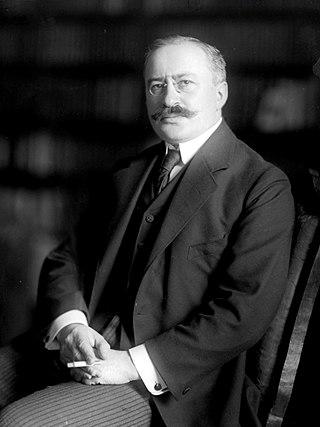
Theodor Wolff was a German writer who was influential as a journalist, critic and newspaper editor. He was born and died in Berlin. Between 1906 and 1933 he was the chief editor of the politically liberal newspaper Berliner Tageblatt.
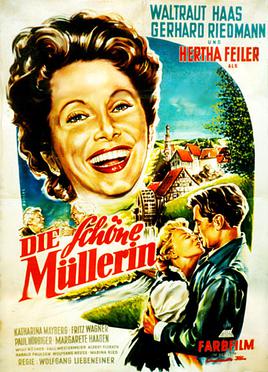
The Beautiful Miller is a 1954 West German romantic drama film directed by Wolfgang Liebeneiner and starring Waltraut Haas, Gerhard Riedmann and Hertha Feiler.

Her Other Self is a 1941 German drama film directed by Wolfgang Liebeneiner and starring Hilde Krahl, Mathias Wieman, and Erich Ponto.

Three Dancing Maidens is a nymph fountain (Nymphenbrunnen) sculpture by Walter Schott. There are three full-size versions or castings of the bronze sculpture. One is known as the Untermyer Fountain in Central Park, New York, the second one is in Antwerp’s Den Brandt Park, and the third one is in the courtyard of the Burg Schlitz castle, a grand hotel in the Mecklenburg region of northern Germany. Identification of the original sculpture created for Rudolf Mosse in 1909, and later looted by the Nazi Party is the subject of research, which appears to be leading to the version in the Burg Schlitz castle. Three-quarters scale castings, likely to be examples of the sculptor's early drafts, can be found in Germany, Austria, and Northern California.
Fritz Nathan was a German-Swiss gallery owner and art dealer.
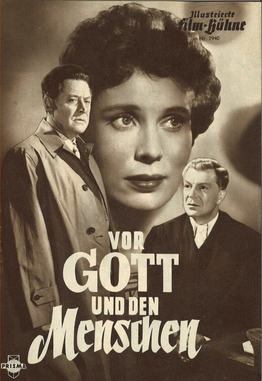
Before God and Man is a 1955 West German drama film directed by Erich Engel and starring Viktor de Kowa, Antje Weisgerber and Hans Söhnker. It was shot at the Tempelhof Studios in West Berlin. The film's sets were designed by the art directors Emil Hasler and Walter Kutz.
References
- 1 2 "Hans Lachmann-Mosse". Ancestry. Retrieved 2021-03-31.[ dead link ]
- ↑ Mosse, George (1991). Ich bleibe Emigrant [in conversation with Irene Runge and Uwe Stelbrink]. Berlin: Dietz Verlag. pp. 6–7, 21–24. ISBN 3320017543.
- ↑ Georg Lachmann Mosse: Confronting History - A Memoir. Madison: University of Wisconsin Press, 2000, S. 44.
- ↑ "Hans Lachmann-Mosse, a Distinguished German Jew and Publisher". The Hebrew Standard. National Library of Israel. 25 August 1922. Retrieved 2021-03-31.
- ↑ Mosse. Ich bleibt Emigrant. pp. 19, 38.
- ↑ James, Kathleen (1997). Erich Mendelsohn and the Architecture of German Modernism. Cambridge: Cambridge University Press. ISBN 9780521571685.
- ↑ Elisabeth Kraus: Die Familie Mosse: deutsch-jüdisches Bürgertum im 19. und 20. Jahrhundert. C.H.Beck, 1999. p. 719
- ↑ Jost Hermand: Kultur in finsteren Zeiten: Nazifaschismus, Innere Emigration, Exil. Böhlau Verlag, 2010. p. 152.
- ↑ Mosse (1991). Ich bleibt Emigrant. p. 29.
- ↑ "Karola Margarete Lachmann-Mosse (Bock)". Geni. 6 March 1898. Retrieved 2021-03-31.
- ↑ "The Mosse Family". The Mosse Art Restitution Project. Retrieved 2021-03-31.